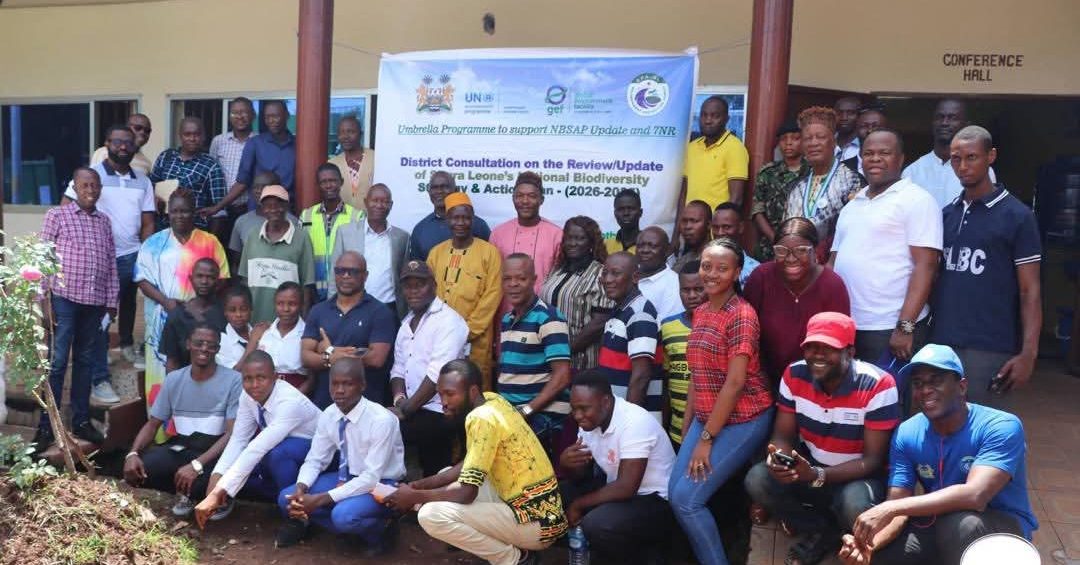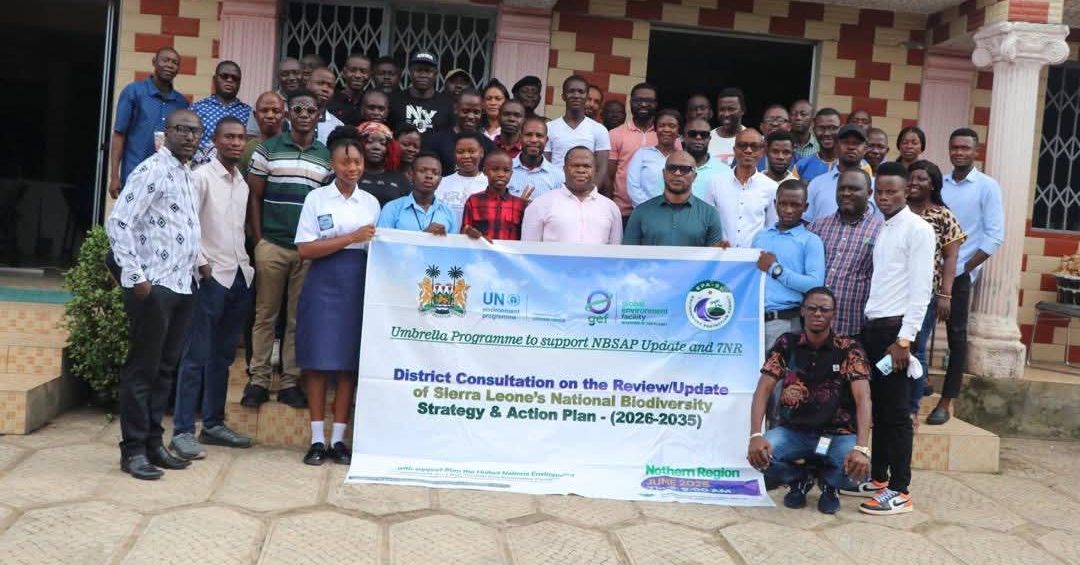The Environmental Protection Agency in Sierra Leone (EPA-SL) have completed regional consultations with district stakeholders on the review and update of Sierra Leone’s National Biodiversity and Action Plan (2026-2035) in the Northern Region.
The consultations covered the Falaba, Koinadugu, Bombali, and Tonkolili districts, providing an overview of the Global Biodiversity Framework, the National Biodiversity Strategy and Action Plan (NBSAP), activities, and the roadmap.

In his presentation, the Focal Point for the Convention on Biological Diversity (CBD), Joseph Turay, said Sierra Leone is developing its third volume of NBSAP, and a people-centred approach is instrumental to the development of a document that enhances stakeholders’ participation and ownership.
“Biodiversity is about the co-existence and wellbeing of plants, animals and humans, and they are all integral components for the sustenance of life in every aspect and the success of any developmental programme”, he added.
Furthermore, the consultation objectives encompassed the conservation of biodiversity, sustaining the use of its components and benefits, fairly and equitably sharing the benefits, and living in harmony with biodiversity by 2050.
The NBSAP targets included the preservation of wetlands as protected areas in line with 30%, the preservation of land, water and seas, the strengthening of bylaws, and the avoidance of evasive (foreign) trees and local trees, all in a bid to tackle biodiversity loss, a component in the triple planetary crisis.
Additionally, there were group work sessions on key themes such as institutional strengthening and capacity building, gender and youth, monitoring, reporting and evaluation, awareness raising, and local technological needs, amongst others, and various viewpoints on what obtains in their districts that must inform the NBSAP targets.

Also, a radio discussion was held in each district, utilising their platforms to propagate the objectives of the consultation and the significance of the NBSAP document.
Finally, the engagement brought together paramount chiefs, representatives from developmental organisations, local councils, school nature clubs, civil society organisations, the media, and related ministries, departments, and agencies, using a one-government approach to formulating national documents from multilateral environmental agreements.



 Post a comment
Post a comment 









